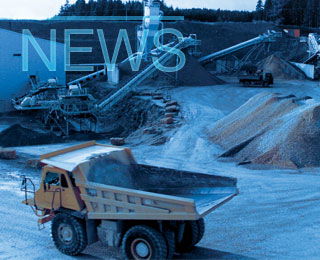Earlier reports quoted on CemNet earlier this week concerning possible 10-15
per cent price rises by Castle Cement in the UK have prompted analysts at
Exane BNP Paribas to delve deeper into the implications for the UK cement
and building materials sectors.
In essence, the commercial director of Castle Cement (HeidelbergCement’s UK
subsidiary), has warned that cement prices are set to rise by 10-15 per cent
in the UK in January 2005 (for bagged cement) and March 2005 (for bulk
cement). The expected increase will differ, being dependent on location,
client relationships and the type of product.
This huge expected price hike apparently highlights the exceptionally high
cost inflation that UK producers are facing compared to the rest of Europe
with the combination of higher energy costs, iron sulphate addition and a
reduction of driver’s working hours all beginning to impact.
However analysts at Exane BNP Paribas remain cautious for the time being
about the sustainability of such a huge hike, given the weak demand outlook
for UK construction and the recent track record of the industry on pricing.
In 2003 and 2004, more competitive cement (imports, new capacity) and
ready-mixed concrete markets lead to pricing pressure or flat trends. The
current trends are still weak, despite the first stage of cost inflation
now impacting companies across the sector. The analysts also believe that
there is a risk that ready-mixed concrete producers will be unable to pass
on fully the cement price hike to their own customers,
According to the analysts, Castle’s coal and electricity bills are
increasing by more than 20% and 50%, respectively. They also estimate that
the average price increase for combustible fuel in Europe in 2005 is
15-20%, while the increase is at the top of this range for the UK. As
combustibles represents 15% of a typical cement cash cost of EUR30/t, the
additional cost is estimated between EUR0.7-0.9/t (15% x EUR30/t x 20%). As
a result, a 1.0 to1.4% price increase is required to recover this inflation.
The average price increase for European electricity in 2005 is estimated at
10%. This trend is linked to the EU directive on CO2 emissions and other
parameters (surging fuel prices, legislation on renewable energies,
liberalisation). As electricity represents 15% of a typical cement cash cost
of EUR30/t, the additional cost is estimated at EUR0.45/t (15% x EUR30/t x
10%). Consequently, a 0.7% price increase is required to recover this
electricity price inflation.
The EU directive 2003/87/EC on CO2 emissions is also raising concerns about
energy prices. The EU is committed to reducing greenhouse gas emissions by
8% from the 1990 level by 2008-2012. From January 2005, the EU Emissions
Trading Directive will cap the absolute amount of CO2 that cement plants can
emit each year and allow them to trade emissions rights under those caps.
The analysts also take note of The Chromium VI Directive (on cement
dermatitis), effective in Jan 2005, which requires ferrous sulphate as a
reducing agent to be added to cement. It would add GBP1/t to production
costs according to Castle, which would require a 2.2% price increase for
this cost to be offset, according to Exane BNP Paribas calculations.
